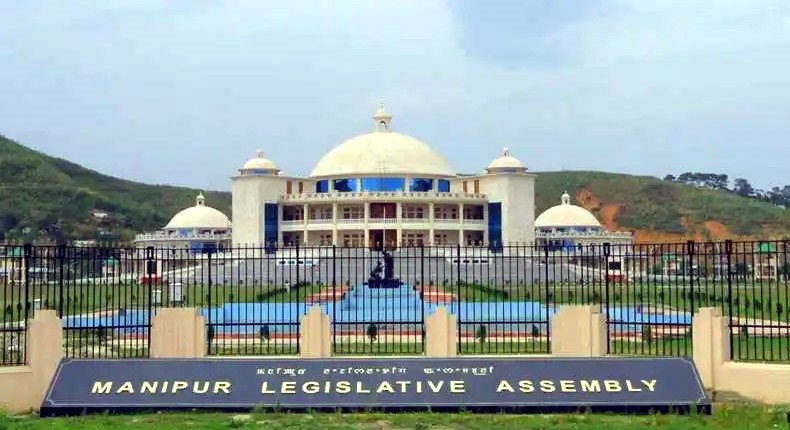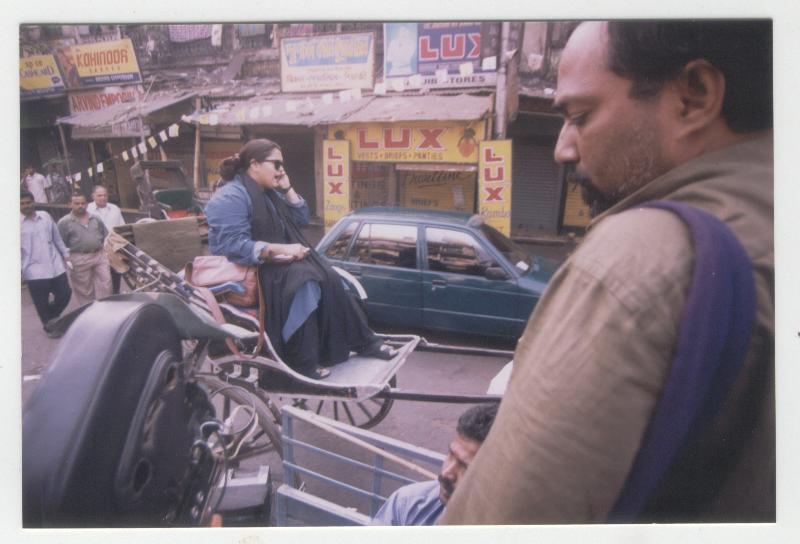In order to encourage and elevate the level of Manipuri cinema, the state gives out awards every year to recognize significant contributions to the Manipuri cinematic landscape in annual Manipur State Film Awards. Mareibak Ningba Herachandra, a feature film directed by Haorongbam Maipaksana was chosen as the Best Film in the 16th Manipur State Film Awards announcement for the year 2025. The winning films were announced on April 9 by Special Commissioner (Art and Culture), Mongjam Joy, in a press event at the Preview Hall of Manipur State Film Development Society (MSFDS), Palace Gate.
Director Haorongbam Maipaksana, who has two national awards and several other awards, continues to influence the story of Manipuri cinema with his storytelling skills and way of filmmaking. In view of this latest award, The Imphal Review of Arts and Politics (IRAP) presents an exclusive interview with him – about the journey behind Mareibak Ningba Herachandra, what he sees for the future of Manipuri cinema and how Manipuri films can get more exposure and recognition on broader platforms.
Excerpts from the Interview:
IRAP: What is the film Mareibak Ningba Herachandra about?
Maipaksana: Mareibak Ningba Herachandra is a historical film based on the seven-year devastation in Manipur’s history. While Gambhir Singh and Nara Singh were in exile in Cachar, Herachandra united people from both the hills and the valley, and developed the Arambai Tenggol to drive out the Ava Kingdom from Manipur. The role of Herachandra is the central theme of the film.
IRAP: Since you mentioned that the film is based on events from 1819–1826 AD, what relevance does it have today, and what message are you trying to convey through it?
Maipaksana: The film focuses on the melodramatic aspects of those historical events. During the recent conflict between the Meitei and Kuki communities, many individuals volunteered to defend their motherland. One such volunteer, while researching Herachandra, met a resource person and felt empowered—like Herachandra himself. Inspired by Herachandra’s courage and valor, this volunteer found the strength to carry on. That inspiration spread, and people across Manipur drew courage from Herachandra’s story. The film conveys that the Herachandra we depict is not just a historical figure; rather, anyone who loves and sacrifices for their motherland embodies Herachandra. This is the core message of the film.
IRAP: You’ve won numerous awards, including two national awards. Today, many young and aspiring filmmakers are emerging in Manipur. What advice would you give them to achieve success like yours?
Maipaksana: In any field, I believe one must learn academically to become a professional. I encourage young people to study at institutions, learn from teachers and experts. To create meaningful art, one must understand the culture and traditions of Manipur. I’m still learning myself. For example, if I want to make a film about ponies, I need to consult resource persons, gather information, and truly understand the subject. Then, I can either write the screenplay myself or collaborate with someone skilled in scriptwriting. No one is an expert in everything. Filmmakers should focus on their chosen subject, conduct thorough research, and learn academically and practically from professionals. This is the first requirement. Without proper research, art lacks depth and fulfillment. First, be a researcher—then you can create meaningful art. This applies not just to film, but to any discipline.
Artists must also have discipline and humility. Art is a form of devotion. Just as sages go to Mount Kailash to seek the meaning of life, we, too, must treat art—whether film, theatre, or other forms—with the same devotion. For instance, I once played the role of Tikendrajit in a two-hour play. To portray a prince as a poor man like myself, I had to deeply understand how a prince behaves. That’s how I came to know the life of Tikendrajit. Likewise, if I played a beggar, I would understand the life of a beggar. Through different roles, we come to understand life itself. Art is a way to reach the divine. It is not about fame or celebrity—it is about discovering the essence of life. That is why I approach theatre and film with deep respect: to understand life.
IRAP: How do you choose a subject or story for your films?
Maipaksana: Just as a poet is inspired to write after seeing Loktak Lake, we filmmakers are inspired to tell visual stories. For example, when we visit Loktak and witness how people live there—their livelihoods, the people of Thanga—it inspires us. Their stories touch us deeply, and we feel compelled to share them through film. That’s how we decide on topics, whether about Loktak, differently-abled individuals, or other social realities in Manipur. Whenever something happens in society and it affects us emotionally, it sparks a conflict within us. That internal conflict gives birth to stories, poems, or film scripts. Even love stories are born this way—when I meet people with deep love stories, and it resonates with my heart, the urge to tell their story arises.
IRAP: How does Manipuri cinema currently compare to other regional cinemas?
Maipaksana: Opinions differ—some say Manipuri cinema is progressing, others say it’s declining, or even dead. In my view, it is somewhere in between—it hasn’t fully developed, but it hasn’t degraded either. Just because one film becomes successful doesn’t mean the industry is thriving. We can only say Manipuri cinema is truly developed when multiple films succeed and are embraced by the public. At present, Manipuri cinema is neither at its peak nor at its lowest point.
In terms of technical capability, filmmaking is a large-scale industry that requires substantial budgets. As of now, Manipur lacks access to the high-end, expensive cameras used in bigger film industries. Only a few individuals have been able to use such equipment here. To truly enhance the quality of Manipuri cinema, we all—producers, directors, and artists—must improve together. Only then can we say Manipuri cinema has flourished. For now, it stands in the middle—between good and bad.
IRAP: Manipur recently celebrated Mami Numit, the birth of Manipuri cinema. Where do you see Manipuri cinema in the next five years?
Maipaksana: In the past, there was a trend of melodramatic films—where the hero was poor, the heroine was rich and beautiful, and they ended up marrying. That formula dominated for a while. But now, storytelling is evolving. Today’s filmmakers are educated and well-trained. As a result, the old melodramatic trend may fade, giving way to more realistic and experimental storytelling.












